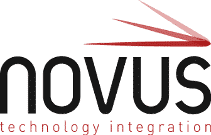The NIST cybersecurity framework (CSF) has been a guide for businesses that want to improve cybersecurity outcomes. This direct and detailed planning resource goes through much of the critical work that companies have to do to fine-tune their systems against cyberattacks and other related problems.
What is NIST?
As a government agency, the National Institute of Standards and Technology, or NIST, is tasked with performing certain research and laboratory operations to promote American innovation and competition in global technology advancement. In that objective, it took over that mandate from the National Bureau of Standards (via renaming) in 1988.
Businesses look to the NIST for advice on IT and the newest research on technologies like the internet, machine learning (ML), and artificial intelligence (AI). Because IT changes quickly, businesses and third-party consultants need a consensus for developing cutting-edge cybersecurity, and the NIST framework is a central component for competitive, reliable IT security.
NIST Cybersecurity Framework
The NIST cybersecurity framework is a set of documents showing a comprehensive model for managing various cybersecurity goals and objectives.
The CSF has three key parts: the Framework Core, Implementation Tiers, and Framework Profiles, and offers various paths forward based on these models and related criteria.
NIST further describes the CSF Core as “a set of cybersecurity activities, outcomes, and informative references that are common across sectors and critical infrastructure.” This, in turn, allows companies to enhance cybersecurity and prioritize the right goals to keep networks safe. Ultimately, this framework aids in NIST’s overarching purpose: bolster U.S. competition in the ever-changing tech landscape while keeping our economy and livelihoods safe.
The framework also identifies five critical phases for the development of cybersecurity achievements:
- Identify
- Protect
- Detect
- Respond
- Recover
Throughout this life cycle, professionals look for anomalies, assess network traffic, spot vulnerabilities, and generally implement best practices to improve the network’s resistance to hacking.
Why NIST CFS is Good for Private Businesses
As mentioned, the NIST cybersecurity framework provides some of the most transparent and tangible guidance for businesses on all sorts of cybersecurity efforts.
So in one sense, the reason that so many private businesses pay attention to NIST CSF is because executives notice the lack of a competing framework from any other party or agency.
NIST has taken the initiative and built a universally recognized framework and gets a lot of buy-in from executives who understand its value. Of course, if your company is not a government partner, you do not have to abide by NIST regulations. However, private companies value the flexibility and scale-appropriate NIST framework, and their interest in the CSF highlights its competitive value.
How MSPs Can Help with NIST Cybersecurity Framework
Managed service providers are a valuable resource for companies to achieve the objectives outlined in the NIST cybersecurity framework. MSPs work as a third party – already with inside knowledge of client networks – to identify cybersecurity needs and improve the company’s security hygiene according to NIST guidance.If you’re interested in understanding how the NIST cybersecurity framework can improve your business, contact Novustek today!


